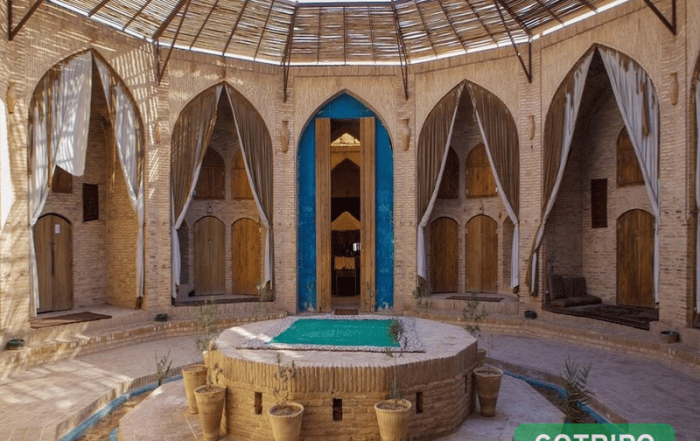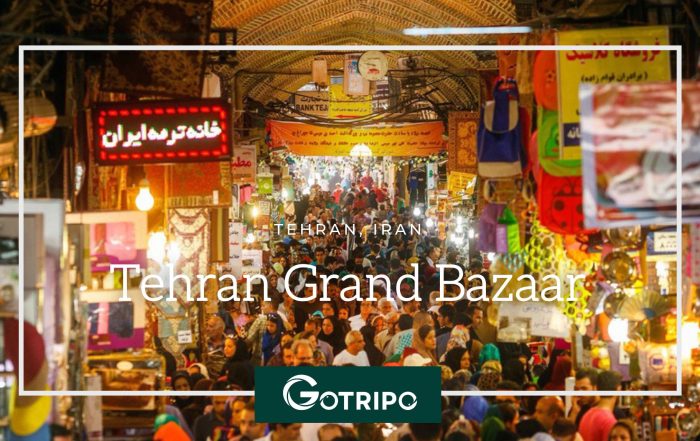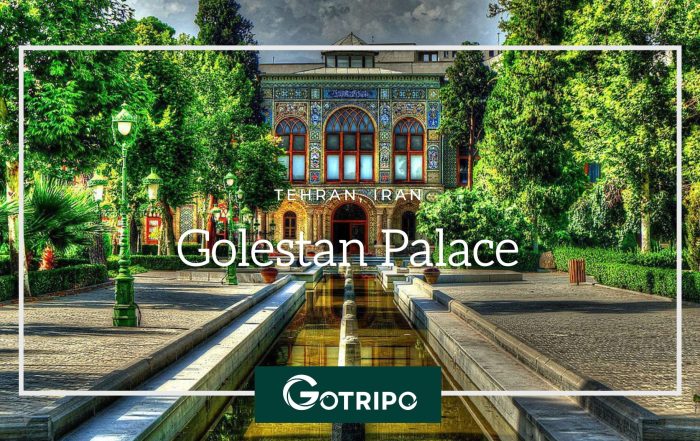Tehran Grand Bazaar
A living, breathing monument to centuries of commerce and culture, the Tehran Grand Bazaar is far more than just a marketplace. Located in the heart of Iran’s capital, it serves as a cornerstone of Iranian identity, where trade, tradition, architecture, and everyday life converge in one of the world’s oldest and most vibrant bazaars. Whether you’re seeking the finest Persian carpets or sipping chai in a teahouse steeped in history, this bazaar invites you into a labyrinth of treasures.
Introduction to Tehran Grand Bazaar
Winding through more than 10 kilometers of interconnected alleys, domes, and corridors, the Tehran Grand Bazaar is a spectacle of sensory overload. Dating back to the Safavid era and expanding massively during Qajar rule, this marketplace has grown into a cultural and commercial epicenter for Iran. A pulsating nucleus of trade, it reflects both ancient practices and contemporary consumer habits.
More than just a shopping destination, the bazaar is a microcosm of Iranian society, offering glimpses into everyday life, local politics, spiritual beliefs, and artisanal mastery. From pilgrims and politicians to backpackers and bazaaris (merchants), this destination unites people from all walks of life.

Origins and History of Tehran Grand Bazaar
The Tehran Grand Bazaar traces its roots back to the Safavid dynasty (16th–18th century). Originally just a modest trading post outside the city gates, the bazaar flourished under the Qajars when Tehran was declared the capital of Iran in the late 18th century.
By the 19th century, it had become the city’s commercial heartbeat. Over time, sections were added for different trades: carpets, spices, gold, copperware, and more. It also served as a meeting point for political movements, religious processions, and revolutionary sentiments, especially during the 1979 Islamic Revolution.
Architectural Style and Design
Unlike modern malls, Tehran Grand Bazaar is a masterpiece of Persian-Islamic architecture. Narrow alleys wind under brick-domed ceilings that regulate temperature, allowing cool air to circulate even during scorching summers.
Key architectural features include:
- Vaulted arches
- Traditional wind catchers (badgirs)
- Geometric tilework
- Colorful stained-glass windows
Restoration projects have helped preserve many of these original features while integrating subtle modern upgrades.

Do you wanna read more about Tehran Tabiat Bridge
Layout and Structure of the Bazaar
The bazaar is divided into various “rastehs” or lanes, each dedicated to a specific type of merchandise. It includes:
- Main corridor: Carpet merchants
- Zargarha (Gold section): Jewelry and ornaments
- Spice lane: Dried herbs, teas, and saffron
- Chahar Suq (Four Bazaars): Traditional fabric sellers
- Copper Bazaar: Pots, pans, and handmade cookware
Despite the hustle and bustle, there’s a rhythmic organization to it all—a living ecosystem of trade passed down through generations.
Types of Goods Sold in Tehran Grand Bazaar
What can you buy here? Almost everything.
- Persian Carpets & Rugs – From tribal to city weaves
- Gold & Jewelry – High-karat pieces with exquisite detailing
- Spices & Herbs – Fresh saffron, sumac, dried rose petals
- Textiles & Clothing – Silk, cotton, and traditional Iranian garments
- Kitchenware & Copper Items – Hammered pans, ornate teapots
- Religious Items – Prayer beads, calligraphy, Qurans
Whether you’re a collector or casual shopper, you’ll find something unique in every corner.

Traditional Persian Carpets and Rug Market
Persian carpets are synonymous with Iranian heritage, and the Grand Bazaar is the ultimate destination for authentic, handwoven masterpieces. Vendors specialize in:
- Tabriz rugs – Known for fine knots and intricate medallions
- Kashan rugs – Soft wool and traditional floral patterns
- Qashqai tribal rugs – Colorful, geometric motifs
Buyers can learn about knot density, natural dyeing techniques, and even watch live weaving demonstrations. Don’t be surprised if a vendor offers tea and a full story behind each carpet’s origin.
Gold and Jewelry Section
The Zargarha (Gold Bazaar) is one of the most mesmerizing areas, where narrow alleys glisten with rows of bracelets, rings, and necklaces. Styles range from:
- Modern minimalist designs
- Antique Persian motifs
- Custom wedding sets
Gold is often sold by weight and labor cost, and bargaining is not just allowed—it’s expected.

Spices and Food Products in the Bazaar
Wander into the spice section and you’ll be enveloped by the aromas of:
- Saffron (Zafaran) – Iran’s red gold
- Sumac – Tangy flavor enhancer
- Golpar – Persian hogweed used in stews
- Dried limes (Limoo Amani) – Essential in Persian soups
These aromatic treasures offer not just taste but a glimpse into Iranian culinary traditions.
The Role of Bazaari Merchants
The bazaaris aren’t just sellers; they’re community leaders. For centuries, they’ve played vital roles in:
- Shaping Iran’s economy
- Influencing political change
- Supporting religious institutions
The Bazaari-Mosque alliance is particularly strong, intertwining commerce with cultural and spiritual life.

Religious Sites Inside the Tehran Grand Bazaar
Several mosques and Hosseiniehs are nestled within the bazaar, offering spaces for prayer and reflection:
-
Imamzadeh Zeid – A beautiful shrine with mirror tilework
-
Mosque of Hajj Sayyah – Historic religious landmark
These spaces reinforce the spiritual heartbeat of the Grand Bazaar.
Cafes and Traditional Teahouses
A trip to the bazaar isn’t complete without sipping tea at a local chaikhaneh (teahouse). Must-visit spots include:
- Moslem Restaurant – Famous for Tahchin
- Sharaf-ol-Eslami – Stews and saffron rice
- Azari Tea House – For a deep dive into tea culture
Sit cross-legged on Persian carpets and enjoy a glass of steaming black tea with a sugar cube held between your teeth.
Historical Events at Tehran Grand Bazaar
The bazaar isn’t just a marketplace—it’s a stage for revolution. It played a pivotal role in:
-
The Constitutional Revolution (1905–1911)
-
The Islamic Revolution (1979)
-
Anti-Shah demonstrations
Its centrality and symbolic weight made it a natural gathering ground for dissent and reform.
Read more: Where is the Tehran Milad Tower?

How to Get to Tehran Grand Bazaar?
Getting to the bazaar is convenient thanks to Tehran’s Metro system:
- Take Line 1 (Red Line) to Panzdah-e Khordad Station
- Walk directly into the southern entrances
If you’re using a taxi, ask for “Bazaar Bozorg.” Avoid peak traffic hours as the surrounding streets can be very congested.
Best Time to Visit the Tehran Grand Bazaar
For the best experience:
- Mornings (9 AM – Noon) are ideal for calm browsing
- Weekdays (Sat–Wed) are less crowded
- Avoid Thursdays & Fridays as it gets extremely busy and many shops close early on Fridays
Weather-wise, spring and autumn offer the most comfortable browsing conditions.
Shopping Tips for Tourists
-
Bargain politely—it’s expected and respected
-
Check multiple shops before committing to big purchases
-
Cash is king—few shops accept international cards
-
Ask for receipts if you’re buying high-value items like jewelry or carpets
Tourists are often welcomed warmly, but awareness and courtesy go a long way.
Photography Opportunities in the Bazaar
With its intricate brick domes, sunlight filtering through latticework, and colorful merchandise, the bazaar is a photographer’s paradise. Tips:
-
Use natural light
-
Capture candid moments with merchants
-
Focus on textures—spices, fabrics, metals
Early morning provides the best soft lighting and less crowded lanes.
Nearby Attractions to Combine with Visit
Make the most of your visit by exploring:
-
Golestan Palace – Just a few steps away
-
National Jewelry Museum – A few metro stops north
-
Tehran City Park (Park-e Shahr) – For a green break
These sites create a well-rounded historical and cultural day tour.
Conclusion
Tehran Grand Bazaar isn’t just a place to shop—it’s a living museum, a cultural crossroads, and an unforgettable adventure into the heart of Iranian life. From the glint of gold to the aroma of saffron, it engages every sense and invites every traveler to become a storyteller.
If you’re seeking authenticity, artistry, and a direct line to Iran’s soul, there’s no better place to begin than right here.
FAQs of Tehran Grand Bazaar
Is the Tehran Grand Bazaar open every day?
It’s open from Saturday to Wednesday. Many shops close early on Thursdays, and the bazaar is mostly closed on Fridays.
Can I use US dollars or euros in the bazaar?
Most transactions are in Iranian Rials, but some merchants accept foreign currency and may offer favorable rates.
Are credit cards accepted?
No. Only local Iranian bank cards work. Cash is necessary.
Can I ship items internationally from the bazaar?
Yes, especially carpets. Reputable sellers offer international shipping with proper documentation.
Is it safe to visit as a solo traveler?
Yes. It’s crowded but generally very safe. Just keep an eye on your belongings.
How much time should I spend at the bazaar?
At least 2–4 hours to explore main sections, or a full day if combining with nearby attractions.
news via inbox
Subscribe to receive the best offers, travel guides, and hot deals!








